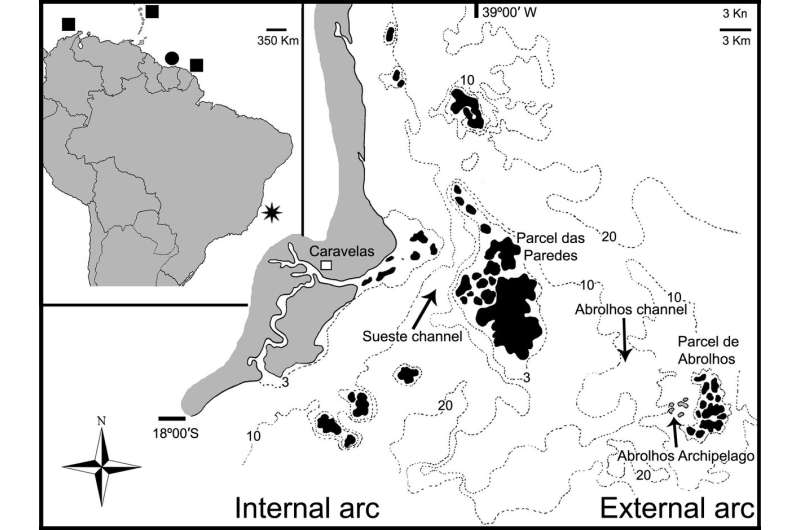Tiny bivalve found in Brazil sheds light on tropical Atlantic biogeography

For the first time, the bivalve mollusc Guyanella clenchi has been reported from Abrolhos Bank, Brazil. This almost unknown bivalve had previously been reported solely from the Caribbean region. Apart from being the southernmost record for the species, its presence also helps the experts to determine the way the marine fauna from the Caribbean interacts with its South American relatives.
The bivalve, which is a minute mollusc of only a few millimetres, had been known from Suriname, Guadeloupe, Colombia and French Guiana for nearly half a century. However, it is almost absent from the bibliographical registers and zoological collections.
Then, during recent cruises to Abrolhos Bank (Bahia, Brazil) carried out as part of the Pro-Abrolhos project at Instituto Oceanografico da Universidade de Sao Paulo (IO-USP), the researchers unexpectedly retrieved enough specimens to document the mysterious species from the Brazilian site. The resulting study is published in the open-access journal Check List.
According to the scientists, the discovery is very important for the understanding of the interaction between the mollusc faunas from the Caribbean and Southern Atlantic regions. While a mixture of these had long been known at both localities, serving as evidence that many species are indeed capable of crossing the geographical barriers between the two oceanic areas, it seems that no one had managed to answer how exactly this is happening. Now, the discovery of the tiny species shows that even small-sized molluscs have the ability to disperse so widely.

Additionally, the discovery of fresh specimens, complete with the body inside the shell, brings to light new information about the anatomy of the species itself, since the existing knowledge had only been derived from dry shells. Now, the secretive bivalve is to finally undergo molecular analyses.
"Despite its small size, the new occurrence of Guyanella clenchi brings new key data needed to understand the biogeography of the Caribbean and Southern Atlantic regions and improve our knowledge of the molluscs inhabiting the Brazilian coast, specifically the Abrolhos Bank, which is an important South Atlantic biodiversity hotspot," explain the researchers behind the study.
Abrolhos Bank is the largest and most species-rich coral reef in the Southern Atlantic. It is located in the Abrolhos Archipelago area and is part of the Abrolhos Marine National Park. Its most notable peculiarity is the giant coral structures shaped like mushrooms, locally known as chapeiroes. A chapeirao can reach up to 25 metres in height and 50 metres in diameter. The region is considered the most biodiverse spot in the Southern Atlantic Ocean, providing home to several species that occur nowhere else.
More information: Bárbara Louise Valentas-Romera et al, Range extension of Guyanella clenchi (Altena, 1968) (Bivalvia, Lucinidae) with new records from Abrolhos Bank, Brazil, Check List (2019). DOI: 10.15560/15.4.549
Provided by Pensoft Publishers


















